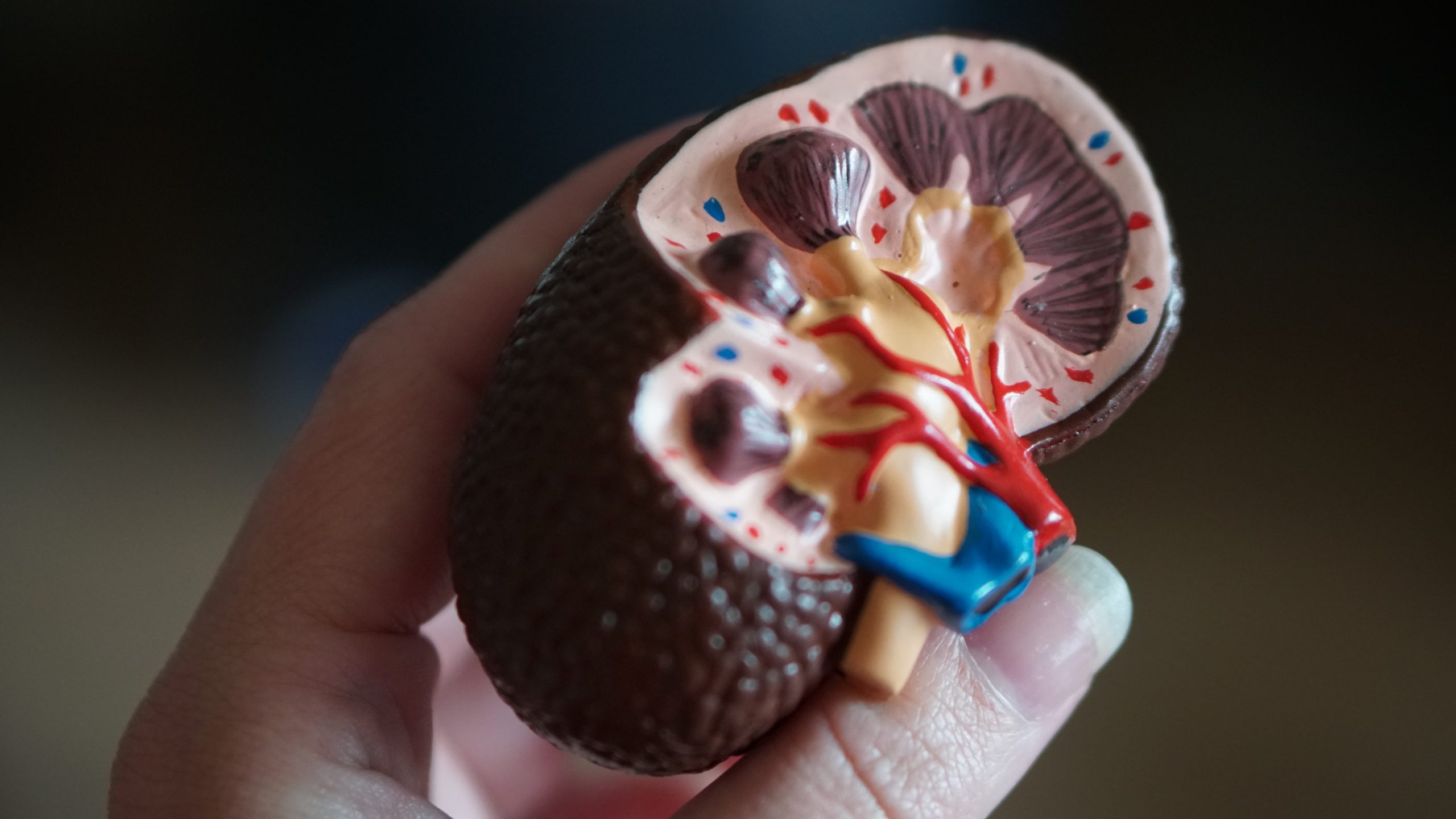 Richard Armitage is a GP and Public Health Specialty Registrar, and Honorary Assistant Professor at the University of Nottingham’s Academic Unit of Population and Lifespan Sciences. He is on twitter: @drricharmitage
Richard Armitage is a GP and Public Health Specialty Registrar, and Honorary Assistant Professor at the University of Nottingham’s Academic Unit of Population and Lifespan Sciences. He is on twitter: @drricharmitage
Last year I donated a kidney as a non-directed altruistic donor through the UK Living Kidney Sharing Scheme (UKLKSS). I explained the landscape of kidney donation in the UK, how kidneys from living donors are shared in the UK, and the process of donating through the UKLKSS, in a previous article (which I penned before my donation).1 In this article I shall use my recent experience to fill in the gaps of the previous article – specifically regarding the phase between Living Donor Kidney Matching Runs (LDKMR) and the surgery, the surgery itself, and the recovery – and highlight what GPs need to know in order to support patients who choose to go through this process themselves.
Post-LDKMR
Following a series of consultations and investigations, I was deemed suitable to donate and was entered into the July 2022 LDKMR as a non-directed altruistic donor (NDAD). I was matched with a potential recipient and would trigger an altruistic donor chain (ADC) in which three people with ESRD would receive a donated kidney.
I was deemed suitable to donate and was entered into the July 2022 LDKMR as a non-directed altruistic donor…
After the formation of the ADC, around four weeks elapsed for the date of the surgery to be finalised. This delay was the result of the necessary coordination between three Transplant Centres across the UK to organise two lots of three simultaneous surgeries (three simultaneous donor nephrectomies followed by three simultaneous graft insertions) with cross-country transportation of three organs between these surgeries. The surgery date was booked for 10 weeks after the LDKMR. As the surgery date approached, I had a pre-operative assessment with the anaesthetist, and an appointment with the transplant surgery (to run through the operation, to remind me of the risks, and to seek my consent for the surgery to take place). Blood tests for final cross-matching between donor and recipient were required within two weeks of the transplant (to ensure my serum remain compatible with that of the recipient, and had not changed significantly since the LDKMR).
A few days before the planned surgery, a member of the ADC caught COVID-19, and the entire ADC was consequently postponed. Current regulations require a four-week period to elapse between the beginning of the COVID-19 infection and the subsequent surgery, and challenges in the coordination of the relevant Transplant Centres meant the new date was set for seven weeks after the original. A repeat cross-matching between donor and recipient was required within two weeks of the new surgery date.
The surgery
I was admitted to hospital on the morning of the surgery, had spinal and general anaesthetics, and underwent a laparoscopic left nephrectomy. The surgery took 2.5 hours as planned, encountered no complications, and involved four incisions (three 1cm port sites – at umbilicus, above umbilicus, and below-left of umbilicus – and an 8cm horizontal midline incision in the underwear waistband to retrieve the organ).
I spent three nights in hospital after the surgery, during which I required decreasing oral analgesia (I was prescribed regular oxycodone 5mg MR BD and PRN oxycodone 5mg IR 6-hourly on top of regular paracetamol and nefopam), became increasingly mobile, had the urinary catheter removed, and regained my appetite. I was discharged when I was able to eat, drink, urinate, open bowels, mobilise and care for myself without assistance. I was provided with a small supply of analgesia, laxatives (lactulose and senna) and the remaining doses of 7-days post-operative VTE prophylaxis SC enoxaparin injections to take home.
The recovery
The biggest problems during the recovery period were caused by pain, abdominal swelling (from the laparoscopic insufflation of intrabdominal CO2 gas), tiredness and constipation. These improved significantly and became much less problematic within the first 5-7 days. Nine days after the surgery (day of submitting this article) I’m able to slowly walk numerous miles without any problems, but continue to follow the advice to avoid driving for at least the next week and heavy lifting (such as resistance training in the gym) until at least 4-weeks after the surgery. Potential complications, such as wound infections and deep vein thromboses, have thankfully been avoided.
I received two follow-up phone calls from the Living Donor Nurse in the week following discharge, and continue to have direct access to the surgical ward if needed. I’m due to have a follow-up appointment with the surgeon four weeks after the operation. Beyond this, I shall receive routine annual follow-up from the Renal team in which my eGFR, urine ACR and blood pressure shall be monitored (interestingly, my eGFR reduced by 50% the moment the clamp was placed across my left renal arteries, and remained so for about 24 hours after the nephrectomy, before climbing to about 75% of the original – the remaining kidney increased its output substantially, and is expected to continue functioning at this level which constitutes my new baseline).
Reflections on the process, and what GPs need to know to support patients going through it
The UKLKSS allows kidneys to be shared through paired/pooled donations (PPDs), and ADCs that are initiated by NDADs. The following insights apply to all varieties of kidney donor – non-directed donors (who donate in PPDs) or NDADs, as well as directed donors who donate to identified individuals such as family members – as the process, surgery and recovery are likely to be similar across all forms.
Returning to work
The appropriate amount of time off work after a donor nephrectomy depends on the nature of one’s job. The surgical team could provide a sick note for up to six weeks for those with manual or heavily physical occupations. I’m hoping to get back to the consulting room after a period of two weeks.
Reimbursements
The UKLKSS allows for reimbursement of basic expenses, such as those spent on travel to and from hospital appointments, if they are requested by the donor.
Timescale
Due to a series of factors, including the outbreak of the COVID-19 pandemic (which temporarily suspended the UKLKSS), my donation process was substantially delayed multiple times. Absent any postponements, it is likely that the entirety of the process could have been completed within 12 months.
Repeated investigations
Due to delays in the process, some of the appointments and investigations exceeded their ‘use by dates’ and therefore had to be repeated, including that with the renal consultant, and the CT scan, ECG and various blood tests.
No pressure to proceed
…the decision to initiate contact and proceed with the process was entirely my own and I was not subjected to undue pressure…
I waited for two years after the first appointment before remaking contact with the Team to proceed with the process. During this time the Team made no attempt to contact me, and the decision to initiate contact and proceed with the process was entirely my own and I was not subjected to undue pressure from the Team. I also chose to suspend the process when my Mum was diagnosed with a terminal illness. The Team was entirely understanding and supportive of this decision, and allowed me to contact them again once I was ready to continue with the process. Again, I felt no undue pressure from the Team to donate.
Identity kept confidential
The identities of all those involved in the ADC – all recipients and donors – were kept confidential throughout the process. Other than the facts that they needed a replacement kidney and live in the UK, I am privy to no details of my kidney’s recipient. The recipient has the option to write a letter to be forwarded to me by the Team, in which they can reveal any aspect of their identity if they so wish, but they are under no obligation to do so (I do not have the option to send a letter to the recipient, as per the UKLKSS policy).
Publicity
I chose to publicise my donation to raise public awareness of the potential for individuals to donate a kidney to a stranger. Give A Kidney2 is the official partner charity for the UKLKSS and assists willing altruistic donors in producing and distributing press releases regarding their donations. I’m awaiting numerous media interviews as a result of this. I also shared my donation on my personal Twitter and Facebook profiles.
ADC and effective altruism
My ADC allowed three donations to take place, while only one would have occurred had I not been matched into an ADC. However, I did not have direct control over this outcome. While the UKLKSS is designed to maximise the number of donations made possible by NDADs, many altruistic donors are matched directly with an individual on the national waiting list who is not in a linked donor-recipient pair, meaning these donors do not form ADCs and their donations only generate single transplantations. NDADs matched in this way have the option to not proceed with their direct donation, and instead wait for the next LDKMR in which they may be matched into an ADC. While this would obviously generate a more effective outcome (a greater total number of donations that would otherwise not take place), denying the original recipient a much-needed kidney presents its own ethical challenges.
References
- R Armitage. What GPs need to know about non-directed altruistic kidney donation. BJGP Life 29 August 2022. https://bjgplife.com/what-gps-need-to-know-about-non-directed-altruistic-kidney-donation/ [accessed 02 December 2022]
- Give A Kidney. https://www.giveakidney.org
Featured photo by Robina Weermeijer on Unsplash






